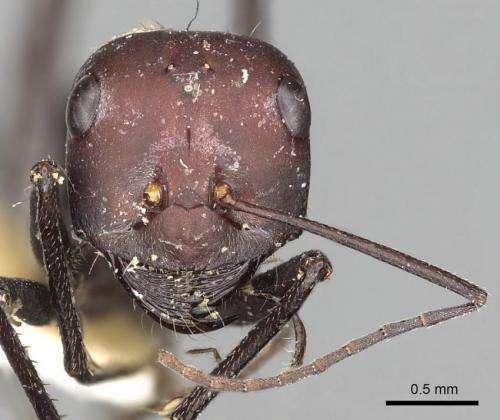June 11, 2014 report
Researchers find bundled team swimming in ant spermatozoa increases speed

A team of researchers at Université Libre de Bruxelles in Belgium has found that desert ants (Cataglyphis savignyi) have a means for binding their spermatozoa into bundles that, by working together as a team, are able to swim faster than individual sperm cells. In their paper published in the journal Biology Letters, the researchers describe how in studying the ant's sperm under a microscope they were able to identify bundles formed of 50 to 90 sperm cells, forming what appears to look like an octopus with a huge number of appendages.
Female desert ants mate promiscuously, that is, they mate with one male after another in quick succession, building up a load of sperm which they then use to fertilize their eggs. While this approach might seem logical to the females, it clearly is cause for problems for the males, each of which are genetically programmed to do their best to pass on their genes. Even more problematic is that the males die shortly after mating, which means, they only get one shot at making sure it's their sperm that is selected by the female. As a result, the team in Belgium reports, the desert ant has developed a means for speeding up the rush to the queen's spermatheca—having its sperm cells band together to swim together as a single unit. To help the swimmers stay together and work as a team, their heads are all "glued" together with a cap of sticky protein, creating the impression of a single headed creature with a mass of tails swimming frantically forward.
The researchers found that such bundles could swim up to 51 percent faster than individual sperm cells, which in theory should mean more of an individual's sperm ends up in the female's spermatheca. The problem of course is that all the other males are using the same technique. Perhaps in the future, the ants will develop a means for adding water squeezed propulsion to the bundles to add even more speed, ala octopi and squid. In the meantime, it appears that with ants the best bundler will be the one that prevails.
More information: Paper: Team swimming in ant spermatozoa, rsbl.royalsocietypublishing.or … .1098/rsbl.2014.0308
Journal information: Biology Letters
© 2014 Phys.org




















